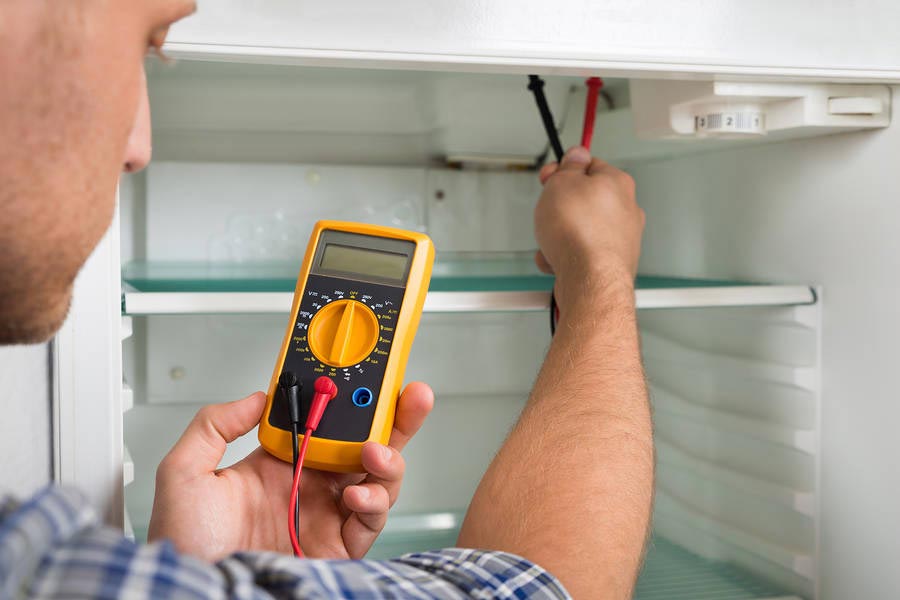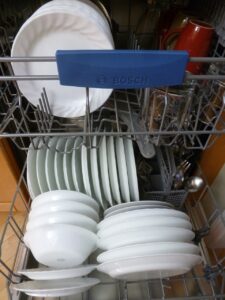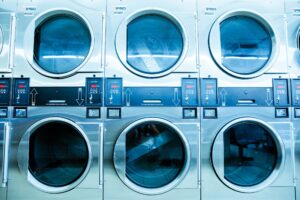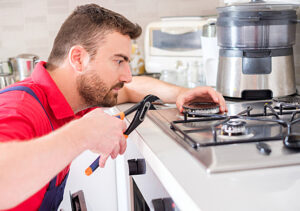First, check the power source and ensure the refrigerator is plugged in and receiving electricity. Next, clean the condenser coils to improve cooling efficiency.
A refrigerator that’s not cooling can be a major inconvenience, but many issues can be resolved with simple troubleshooting. Start by ensuring the appliance is properly connected to a power source and that the circuit breaker hasn’t tripped. Dirty condenser coils are another common culprit; these coils need to be cleaned regularly to facilitate proper heat dissipation.
Inspect the thermostat settings to ensure they are correctly adjusted. Additionally, check the door gaskets for any wear or damage that might be letting cold air escape. Finally, ensure there’s proper airflow inside the refrigerator by not overloading it with items. If these steps don’t resolve the issue, consulting a professional might be necessary.
Initial Checks For A Non-cooling Refrigerator
A non-cooling refrigerator can be a major inconvenience. Before calling a technician, perform some initial checks. These checks can help you identify and possibly fix the issue yourself. Below are some steps to follow:
Symptom Assessment
Start by checking the symptoms of your refrigerator. Is it completely warm or just not as cold as it should be? Knowing the exact symptom can help narrow down the cause.
- Completely Warm: This could indicate a serious issue.
- Partially Cold: Might be due to minor issues like airflow blockage.
Power Source Confirmation
Ensure that your refrigerator is properly connected to a power source. This is a simple yet often overlooked step.
- Check if the power cord is plugged in securely.
- Inspect the outlet for power by plugging in another device.
| Check | Action |
|---|---|
| Power Cord | Ensure it’s not loose or damaged. |
| Outlet | Test with another device to confirm power. |
Temperature Control Troubleshooting
Is your refrigerator not cooling? One common reason is temperature control issues. Adjusting the thermostat and understanding temperature settings can fix the problem. Follow these simple steps to troubleshoot temperature control.
Adjusting The Thermostat
The thermostat controls your refrigerator’s cooling. Ensure it is set correctly. Follow these steps:
- Locate the thermostat inside the fridge.
- Use a screwdriver to adjust the dial.
- Set it to the middle setting for optimal cooling.
- Wait a few hours and check the temperature.
Important: Make sure the thermostat is not set too low or too high. This can cause improper cooling.
Impact Of Temperature Settings
Temperature settings significantly impact your refrigerator’s cooling efficiency. Incorrect settings can lead to spoilage or freezing. Here are the recommended settings:
| Compartment | Recommended Temperature |
|---|---|
| Refrigerator | 37°F (3°C) |
| Freezer | 0°F (-18°C) |
Ensure the settings match these recommendations. Adjusting the temperature settings can improve cooling performance.
Tip: Use a fridge thermometer to verify the internal temperature. This ensures accuracy and helps you maintain optimal cooling.
Seal The Deal: Door Gasket Inspection
One common reason your refrigerator might not be cooling efficiently is a faulty door gasket. The door gasket is the rubber seal that runs along the edge of your refrigerator door. It ensures the cool air stays inside and the warm air stays out. If the gasket is damaged or dirty, it can compromise the cooling efficiency. Below are steps to inspect, clean, and replace the door gasket.
Detecting Seal Issues
A worn-out door gasket can cause cool air to leak out. This makes the fridge work harder to maintain the temperature. To check for seal issues, follow these simple steps:
- Inspect the gasket for cracks, tears, or deformations.
- Close the refrigerator door on a piece of paper or a dollar bill.
- Try to pull the paper out. If it slides out easily, the gasket is not sealing properly.
Perform this test at multiple points around the door. This helps ensure a thorough inspection.
Gasket Cleaning And Replacement
If the gasket is dirty but not damaged, a good cleaning might improve its seal. Use the following steps to clean the gasket:
- Mix a solution of warm water and mild soap.
- Use a soft cloth or sponge to clean the gasket.
- Dry the gasket thoroughly with a clean towel.
If the gasket is damaged, it needs to be replaced. Here’s how to do it:
- Buy a replacement gasket specific to your refrigerator model.
- Loosen the screws holding the old gasket in place but do not remove them completely.
- Remove the old gasket and fit the new one in place.
- Tighten the screws to secure the new gasket.
After replacing the gasket, perform the paper test again. This ensures that the new gasket seals properly.
| Step | Description |
|---|---|
| 1 | Inspect the gasket for damage |
| 2 | Clean the gasket with warm, soapy water |
| 3 | Replace the gasket if necessary |
Ensuring a tight door seal can significantly improve your refrigerator’s cooling efficiency. Follow these steps for a quick and effective solution.
Ensuring Proper Airflow
Proper airflow is crucial for your refrigerator to maintain the right temperature. If the air cannot circulate freely, it can cause your refrigerator to stop cooling efficiently. Let’s delve into the necessary steps to ensure optimal airflow inside your refrigerator.
Clearing Vents Of Blockages
First, locate the air vents inside your refrigerator. These vents allow cold air to circulate throughout the compartments. If blocked, they can significantly hinder the cooling process.
- Inspect all vents for any visible obstructions.
- Remove any items blocking the vents, such as food containers or packaging.
- Use a soft brush or cloth to clean any dust or debris from the vent openings.
Clearing these vents can significantly improve the airflow and cooling efficiency.
Organizing Contents For Optimal Circulation
Properly organizing the contents of your refrigerator is another key factor. Overloading or improperly placing items can restrict airflow, leading to cooling issues.
| Tip | Explanation |
|---|---|
| Avoid Overloading | Leave some space between items to allow air to circulate freely. |
| Proper Placement | Ensure that larger items are not placed too close to the air vents. |
| Use Clear Containers | Clear containers make it easier to see and organize items, preventing blockages. |
Following these simple tips can help maintain optimal airflow, keeping your refrigerator cool and efficient.
Condenser Coil Maintenance
Condenser coil maintenance is crucial for your refrigerator’s efficiency. Dirty coils can cause the fridge to overheat and stop cooling. Regular cleaning can prevent expensive repairs and prolong the appliance’s lifespan.
Locating And Cleaning Coils
First, you need to locate the condenser coils. They are usually found at the back or bottom of the fridge. Here’s a simple way to clean them:
- Unplug the refrigerator to ensure safety.
- Use a screwdriver to remove the back panel if necessary.
- Use a vacuum cleaner with a brush attachment to remove dust and debris.
- Wipe the coils with a damp cloth for a thorough clean.
- Reattach the panel and plug the fridge back in.
Recognizing Signs Of Dirty Coils
Recognizing the signs of dirty coils helps you act quickly. Here are some indicators:
- The refrigerator is running but not cooling.
- Excessive heat from the back of the fridge.
- Unusual noises or frequent cycling on and off.
- Increased electricity bills.
Regularly inspecting and cleaning the condenser coils can save you from costly repairs. Keep your refrigerator running smoothly with these simple maintenance steps.
Dealing With Frost Buildup
Frost buildup in your refrigerator can severely impact its cooling efficiency. It restricts airflow, making it harder for the refrigerator to maintain the desired temperature. Addressing frost buildup is crucial for ensuring your refrigerator works optimally.
Manual Defrosting Procedure
Manual defrosting is a straightforward method to tackle frost buildup. Follow these steps:
- Unplug the refrigerator: Always unplug the appliance to ensure safety.
- Empty the refrigerator: Remove all food items and store them in a cooler.
- Open the doors: Leave the refrigerator and freezer doors open to let the frost melt.
- Use a towel: Place towels around the base to absorb melting water.
- Clean the interior: Once the frost has melted, wipe down the interior with a clean cloth.
- Plug it back in: After cleaning, plug the refrigerator back in and restock the food.
Understanding Auto-defrost Function
Most modern refrigerators come with an auto-defrost function. This feature helps prevent frost buildup by automatically melting any ice that forms on the evaporator coils. Here’s how it works:
- Heating element: A heating element activates periodically to melt the frost.
- Drain pan: Melted water drips into a drain pan located at the bottom of the refrigerator.
- Evaporation: The water in the drain pan eventually evaporates.
If your refrigerator isn’t cooling properly, a malfunctioning auto-defrost system could be the issue. Check the following components:
| Component | Description |
|---|---|
| Defrost Timer | Regulates the defrost cycle schedule. |
| Defrost Heater | Melts the frost on the evaporator coils. |
| Thermostat | Monitors the temperature and activates the defrost heater. |
Ensuring these components are functioning correctly can help maintain your refrigerator’s cooling efficiency. Regular maintenance and timely repairs can prevent frost buildup and keep your appliance running smoothly.
Fan And Compressor Checks
If your refrigerator is not cooling, the fan and compressor might be the culprits. Performing checks on these components can help diagnose and fix the issue. This guide will walk you through evaluating the evaporator fan and testing the compressor’s health.
Evaluating Evaporator Fan Operation
The evaporator fan circulates air over the refrigerator coils, cooling the fridge. A malfunctioning fan can cause cooling problems. Here’s how to evaluate its operation:
- Listen for the fan: When the fridge door is open, you should hear the fan running.
- Check for obstructions: Ensure nothing is blocking the fan blades.
- Inspect the motor: A faulty motor might prevent the fan from spinning.
Testing The Compressor’s Health
The compressor is the heart of your refrigerator’s cooling system. A healthy compressor ensures efficient cooling. Follow these steps to test its health:
- Listen for noise: A working compressor makes a humming sound.
- Feel for vibrations: Place your hand on the compressor. It should vibrate slightly.
- Check the temperature: A warm compressor indicates it’s running. An excessively hot compressor might signify a problem.
If the compressor shows signs of malfunction, it may need professional repair. Keeping the fan and compressor in good condition ensures your refrigerator cools efficiently.

Credit: project-saint.eu
Complex Fixes And When To Call A Pro
Sometimes, your refrigerator not cooling can be a sign of more serious issues. While basic troubleshooting can be done by anyone, complex repairs often require professional expertise. Knowing when to call a pro can save you time and money.
Navigating Advanced Repairs
Advanced repairs involve intricate components. These include the compressor, evaporator coils, and refrigerant levels. Understanding these parts is crucial before attempting any fixes.
Common advanced repairs:
- Replacing the compressor
- Fixing the evaporator fan
- Recharging refrigerant
Attempting these repairs without proper knowledge can lead to further damage. Always ensure you understand the risks involved.
Deciding To Seek Professional Help
Knowing when to call a professional can be challenging. Here are some signs that you need expert help:
| Situation | Why Call a Pro |
|---|---|
| Compressor Issues | Requires specialized tools and knowledge |
| Refrigerant Leaks | Handling refrigerants needs certification |
| Electrical Problems | High risk of injury or further damage |
Steps to take before calling a professional:
- Check the power supply.
- Inspect the thermostat settings.
- Clean the condenser coils.
If these steps do not resolve the issue, it’s time to contact a professional. A certified technician can diagnose and fix complex problems efficiently.
Preventive Measures For Future Efficiency
To ensure your refrigerator runs efficiently and avoids future cooling problems, it’s essential to take preventive measures. These measures can extend the life of your appliance and save you from costly repairs. Below are some key practices to keep your refrigerator in top shape.
Routine Cleaning Recommendations
Regular cleaning is crucial for maintaining your refrigerator’s efficiency. Here are some tips for keeping it clean:
- Clean the condenser coils every three months. Dust and debris can accumulate, making the coils less effective.
- Wipe down the door seals regularly. This ensures they remain airtight and prevent cold air from escaping.
- Clean the interior of the refrigerator monthly. Remove old food and spills to prevent odors and bacteria.
Periodic Inspection Tips
Regular inspections can help catch issues before they become major problems. Here’s what to look for:
- Check the temperature settings. Ensure they are set correctly to keep your food at safe temperatures.
- Inspect the door seals for cracks or wear. Replace if they appear damaged.
- Examine the condenser fan to ensure it’s running smoothly. A malfunctioning fan can lead to poor cooling.
- Look for any unusual noises. Strange sounds can indicate parts that may need attention.
By following these preventive measures, you can ensure your refrigerator remains efficient and avoids future cooling issues.

Credit: easycoolair.com.au
Refrigerator Resetting Techniques
Is your refrigerator not cooling properly? Sometimes, a simple reset can solve the problem. Resetting your refrigerator can help restore its cooling function. This guide will show you effective refrigerator resetting techniques.
Step-by-step Reset Instructions
Follow these steps to reset your refrigerator:
- Unplug the refrigerator from the power outlet.
- Wait for about 10 minutes.
- Plug the refrigerator back in.
- Set the temperature settings to the desired level.
- Wait for the refrigerator to cool down completely.
This method can help reset the internal systems and restore cooling efficiency.
When To Consider A System Reset
Knowing when to reset your refrigerator is crucial. Consider a system reset in these situations:
- The refrigerator is not cooling properly.
- The internal lights are flickering or not working.
- The control panel is unresponsive.
- There is a power outage or surge.
A reset can often fix minor glitches and restore normal operation.
Finding The Right Parts For Your Fridge
A refrigerator not cooling can be frustrating. Finding the right parts is crucial for effective repair. The right components ensure your fridge runs smoothly again. Before diving into repairs, it’s essential to consult refrigerator repair troubleshooting tips to diagnose the issue accurately. Common problems can often be fixed by replacing simple parts like door seals or condenser coils. With the right guidance, you can efficiently restore your refrigerator’s performance and avoid future breakdowns. In some cases, a refrigerator not cooling properly may indicate more complex issues, such as a malfunctioning thermostat or compressor. It’s advisable to monitor the appliance’s temperature settings and ensure the airflow inside is not obstructed, as these factors can significantly impact cooling efficiency. Regular maintenance and inspections can help catch potential problems early, preventing the frustration of a non-functional fridge.
Identifying Model-specific Components
Each refrigerator model has unique parts. Locate your fridge’s model number first. This number is often on the inner side of the door or behind the appliance. Note it down carefully.
With the model number, identify the exact parts needed. Common parts include the compressor, thermostat, and condenser coils. Ensure these parts match your model.
Trusted Sources For Replacement Parts
Purchase parts from reliable suppliers. Check online stores like Amazon, eBay, and AppliancePartsPros. These platforms offer genuine parts for various models.
Local appliance repair shops are also good sources. They provide expert advice and quality parts. Verify the authenticity before buying.
| Source | Type of Parts |
|---|---|
| Amazon | Wide range of OEM parts |
| eBay | New and used parts |
| Appliance Parts Pros | Verified genuine parts |
| Local Repair Shops | Expert advice and parts |
Always compare prices and read reviews. This ensures you get the best deals and quality.
Final Tips For A Cool Running Refrigerator
Ensuring your refrigerator runs smoothly requires consistent care and attention. Here are the final tips to keep your appliance in top condition. These strategies will help maintain optimal cooling performance and extend the life of your refrigerator.
Summary Of Key Steps
Follow these essential steps to repair a refrigerator not cooling:
- Check Power Source: Ensure the fridge is plugged in and receiving power.
- Clean Condenser Coils: Dirty coils impede cooling efficiency. Clean them regularly.
- Inspect Gasket Seals: Faulty seals allow warm air inside. Replace if necessary.
- Adjust Thermostat: Set the thermostat to the correct temperature for optimal cooling.
- Organize Food Storage: Proper food placement ensures even air circulation inside.
Long-term Cooling Strategies
Implement these long-term strategies to keep your refrigerator cool:
- Regular Maintenance: Schedule periodic maintenance checks to identify and fix issues early.
- Proper Ventilation: Ensure adequate space around the refrigerator for air circulation.
- Temperature Settings: Maintain a stable temperature setting to avoid overworking the compressor.
- Defrost Schedule: Regularly defrost manual defrost refrigerators to prevent ice buildup.
- Energy Efficiency: Consider energy-efficient models to save on power and improve performance.
Incorporate these tips to ensure your refrigerator runs efficiently and remains cool for years. Proper maintenance and smart strategies can make a significant difference.
Frequently Asked Questions
Why Is My Refrigerator Running But Not Cooling?
Your refrigerator might run but not cool due to dirty condenser coils, blocked vents, or a malfunctioning compressor. Check door seals and internal fans.
How Do I Get My Fridge To Start Cooling Again?
Check the power source and ensure the fridge is plugged in. Clean the condenser coils. Adjust the temperature settings. Check door seals for gaps. Ensure proper air circulation.
How Do You Reset A Refrigerator That Is Not Cooling?
Unplug the refrigerator for 10 minutes. Plug it back in. Adjust the thermostat settings to the desired temperature. Ensure vents are clear.
What Is The First Thing To Check When A Refrigerator Stops Cooling?
Check the power supply. Ensure the refrigerator is plugged in and the outlet is working. Inspect the circuit breaker.
Conclusion
Ensuring your refrigerator cools efficiently is crucial for food safety. Regular maintenance and timely repairs can prevent major issues. By following the steps outlined, you can troubleshoot common problems effectively. If issues persist, contacting a professional is recommended. Keep your refrigerator in top shape to enjoy fresh, safe food always.



